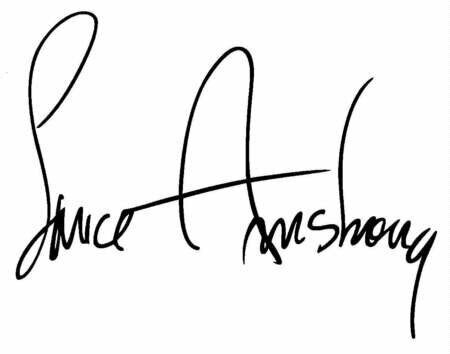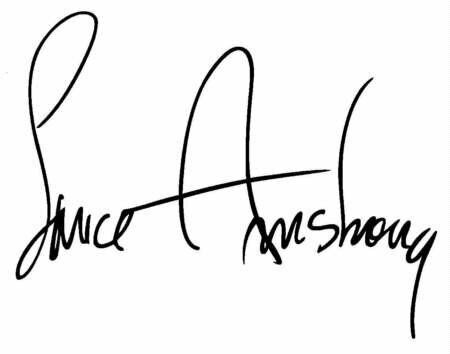
The Lance Armstrong debacle continues to unfold and now the fallen hero clunks into the dénouement. Watching confessions of ongoing steroid use throughout an illustrious career in professional sports is somehow riveting. Is it because we are keen to witness the emergence of a long-denied truth? Maybe we are bearing witness to how character serves to enhance or degrade the human project. Or is it just the magnitude of Armstrong's fall from grace? Whatever it is, the lessons speak to us all. We watched, perhaps pondering, "what do I learn here about human nature?"
As a therapist who looks at the handwriting of psychotherapy clients in a quest to understand something of the mysterious realm of self and soul, I turned to handwriting in order to better understand Lance Armstrong and his current situation.

Enlarged version of Lance Armstrong's signature
The signature above was penned in 2001. For those who analyze handwriting, prominent capitals betray information about the priority a writer gives to first impressions. After all, that capital is the first blush of the word, and if it is carefully rendered or prominently placed, we see a writer who is mindful of how things look and goes the extra mile to make the right first impression. Any given capital would rightly be about double the height of a middle zone letter (like m or o). Or it could be even a bit bigger.
But what if that cap soars into the stratosphere, achieving a height that has it three or four times that of a middle zone letter? Now the graphologist assumes an inflated pride which motors an elevated need for praise and admiration. Using Armstrong's own words, we find here the trait of arrogance. And when arrogance is a dominant trait, another part of the self is necessarily pushed into hiding. Whenever personal limitations or imperfections emerge, what necessarily follows for such a character is the desperate need to hide. And maybe even the need to cheat.

A more current signature by Lance Armstrong
It's worth checking out a second signature, one penned pretty recently. We still see those familiar swollen capital letters expressing, as before, a desire for greatness. We also note that the signature is now more illegible -- an identity that is more secretive, more veiled. We also find an interesting phenomenon: note that the first two letters in his last name have migrated. They are now safely tucked under the arch of the A. This protective encircling often indicates a writer who either harbours a secret or historically has been the bearer of one. The zone of internality is carefully hidden within. On that theme, check out Armstrong's pictures on Google images and note how frequently he is pictured with his hand over his mouth, or with a facial expression that is classicly "tight lipped."
Why the need for the careful protection of the internal dimension? When the hunger for greatness overpowers, addiction can overtake. Initially Armstrong hid only the fact that his physical strength was subject to normal human limits. With the burgeoning addiction, the secret changed; now he kept his misdeed carefully squirreled away. Suddenly there was even more to conceal and the lie, once spun, needed to be maintained.
What do we take away from all this? Probably the folly of over-identifying with a goal. Take a second look at that first signature. Cover the first name and only read the second. See it?

"Am strong."
If only he hadn't enshrined strength as the quintessential expression of self. Now, surrounded by the clamour of lawsuits and complaint, he can revisit that self-concept and work on the answer to the only question of significance (according to Aldous Huxley as cited in Bolton & Grover Bolton): "who am I, and what, if anything, can I do about it?"
This column is designed to introduce the clinical application of the psychology of handwriting, a European technique mostly unfamiliar in North America. Readers can bear in mind that graphology is appropriately used alongside other assessment methods, never used in isolation. This method is discussed fully in my book Clinical Graphology, recently published by Charles C Thomas Publishers.
